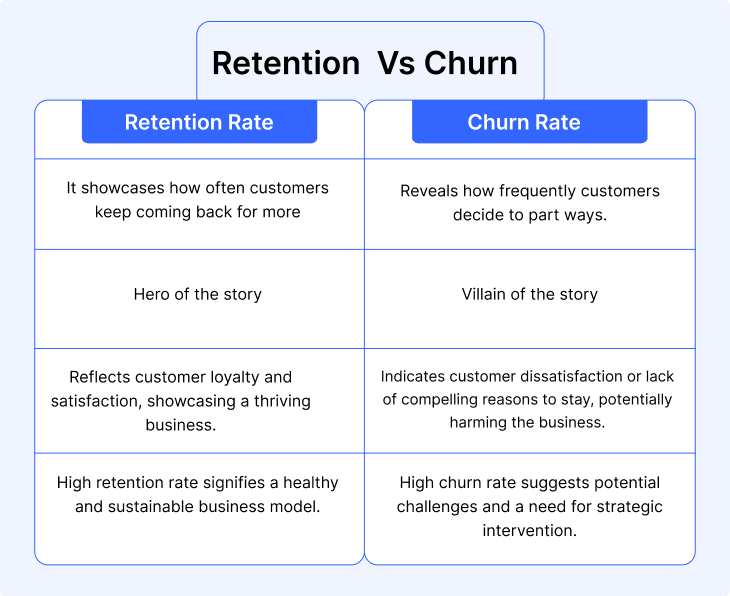
Published: Dec 2, 2024
How Subscription Boxes Work in 2025: The Ultimate Guide
How Subscription Boxes Work in 2025: The Ultimate Guide
I’ve gotta tell you, subscription boxes have come a long way since I first started getting that monthly sock surprise back in college. Now, in 2025, they’re like the Swiss Army knife of shopping – versatile, convenient, and always full of surprises. Let’s unbox this topic together, shall we?
TLDR: What's new with subscription boxes in 2025?
1️⃣ How have subscription boxes evolved since 2020?
Subscription boxes in 2025 are more personalized than ever, using AI to predict preferences and even adjust to your mood. They’ve expanded beyond products to include experiences and services, and many now offer flexible scheduling and eco-friendly packaging.
2️⃣ What types of subscription boxes are popular in 2025?
The hottest subscription boxes in 2025 include virtual reality experience kits, personalized health and wellness packages, sustainable living boxes, and AI-curated entertainment bundles. There’s also a surge in locally-sourced and artisanal food boxes.
3️⃣ How do subscription box businesses make money in 2025?
Subscription box companies in 2025 profit through a mix of recurring revenue, data monetization, cross-selling personalized products, and partnerships with brands for product launches. Many have also introduced tiered pricing models and add-on services.
Table of Contents
- What Are Subscription Boxes?
- Top Subscription Box Trends in 2025
- Hyper-Personalization
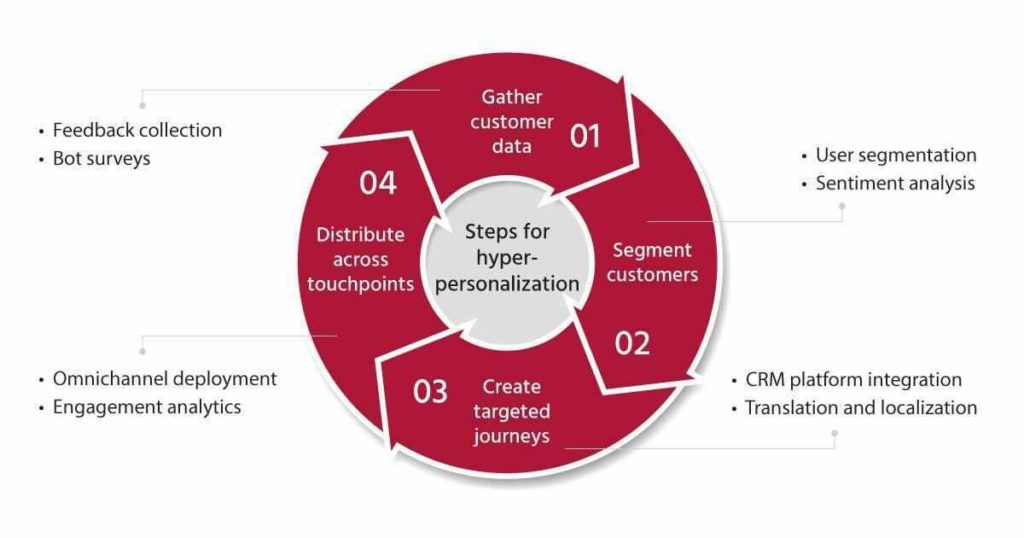
- Virtual Reality Experiences

- Sustainable and Eco-Friendly Options

- AI-Curated Entertainment Bundles
- Health and Wellness Integration
- Augmented Reality (AR) Enhanced Unboxing

- Local and Artisanal Focus

- Flexible Subscription Models
- Integration with Smart Home Devices
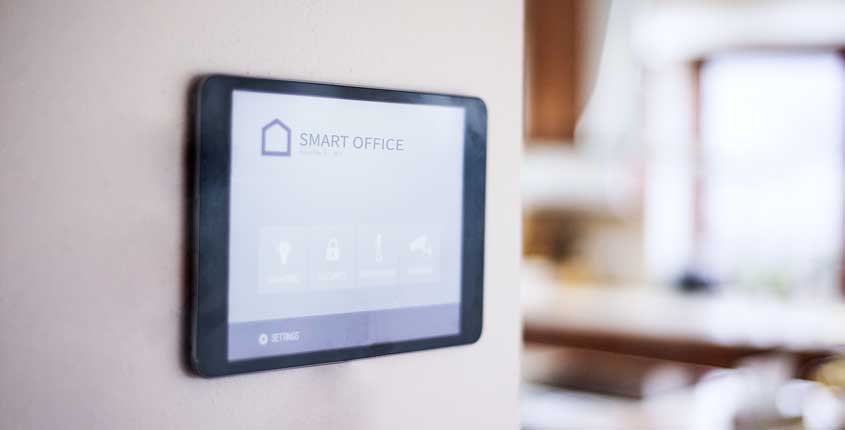
- Educational and Skill-Building Subscriptions

- Hyper-Personalization
- Pros and Cons of Subscription Boxes
- The Future of Subscription Boxes
- Augmented Reality (AR) Unboxing Experiences
- AI-Powered Predictive Subscriptions
- Blockchain for Transparency
- Hyper-Local and Micro-Subscriptions

- Sustainable and Circular Economy Focus
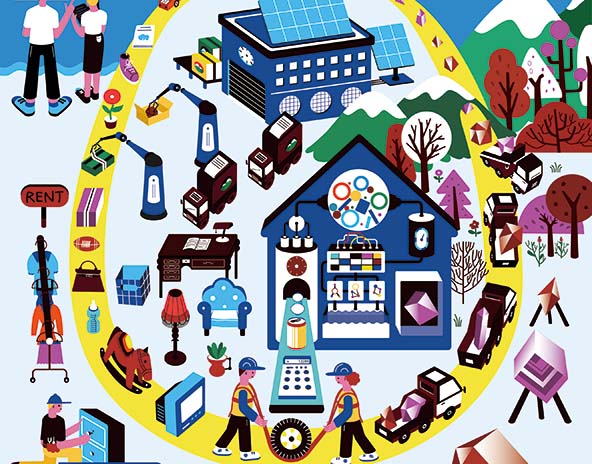
- Integration with Smart Home Ecosystems
- Health and Wellness Revolution

- Virtual and Mixed Reality Experiences

- Personalized Manufacturing On-Demand
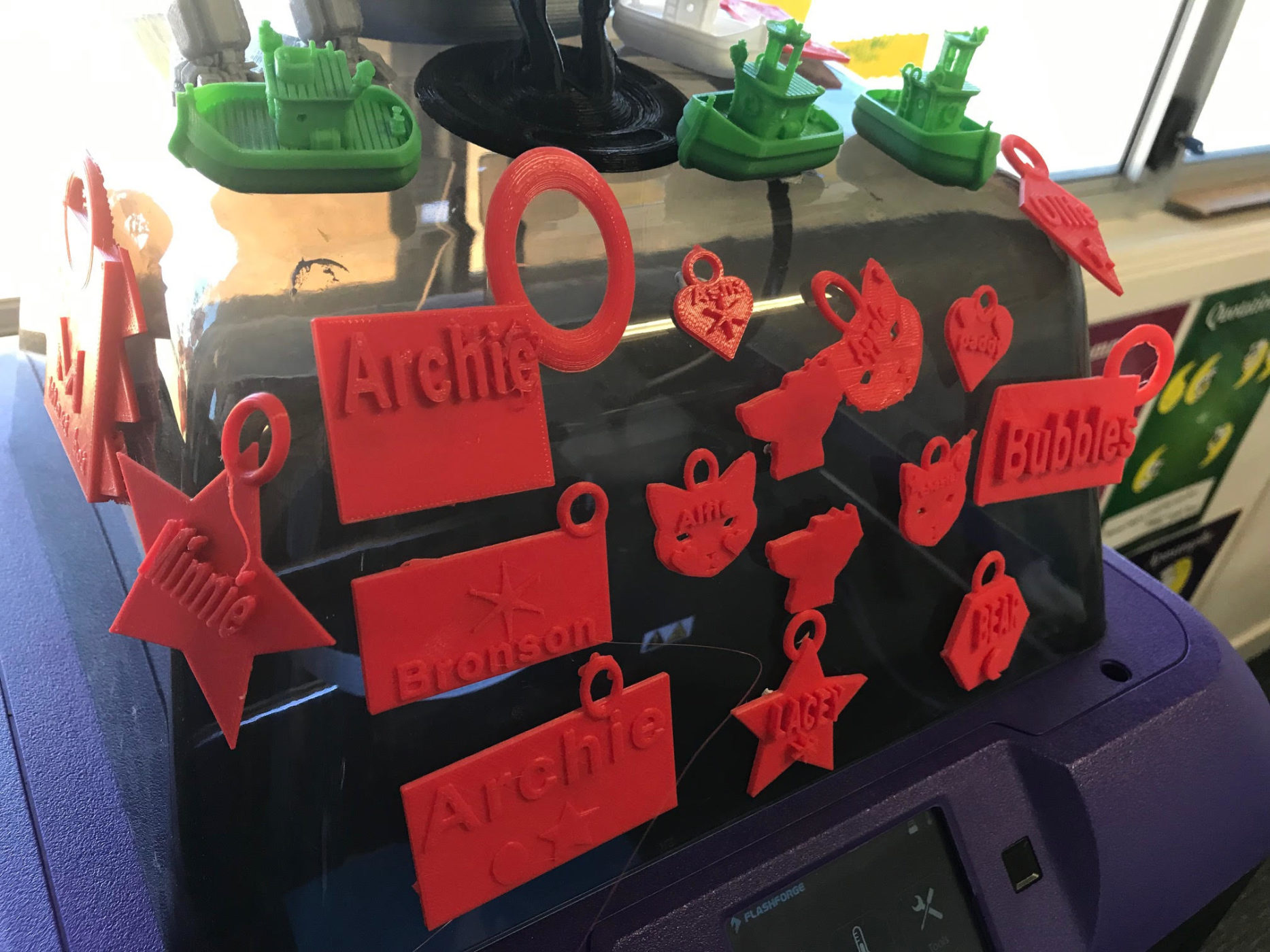
- Social Impact and Community Building

- Integration with Metaverse Platforms

- How Subscription Boxes Work in 2025
- The Subscription Box Business Model
- How to Choose the Right Subscription Box
What Are Subscription Boxes?
Subscription boxes are like getting a gift in the mail every month, but you’re the one sending it to yourself. Pretty cool, right? I’ve been hooked on these since I got my first Birchbox way back in 2010. Now, in 2025, they’ve seriously upped their game.
At their core, subscription boxes are curated packages of products or experiences delivered to your door on a regular basis. But they’re not just about stuff anymore. Let me break it down for you:
Types of Subscription Boxes in 2025
-
- Remember when Blue Apron was the hot new thing? Now we’ve got AI-customized recipes and ingredient sourcing.
Virtual Reality Experience Kits
- This is where things get wild. You get a box with scents, textures, and VR gear to fully immerse yourself in a new world each month.
Personalized Wellness Packages
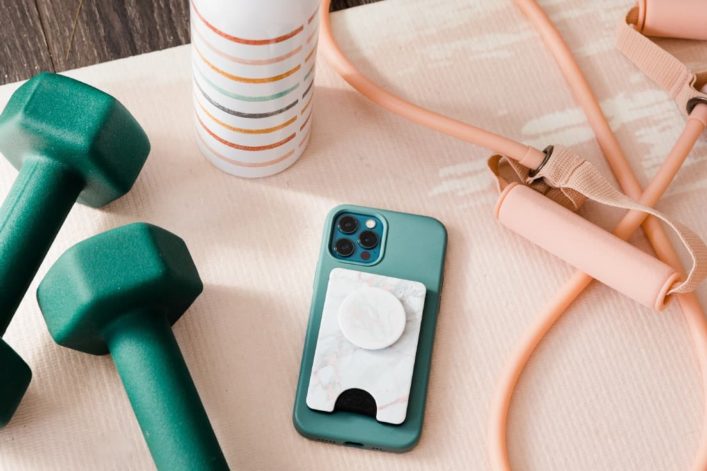
- These boxes use your biometric data to send you tailored supplements, workout gear, and mindfulness tools.
-
- Eco-friendly products, zero-waste items, and carbon offset credits all bundled up.
The Evolution of Subscription Boxes
Back in the day, it was all about getting a surprise in the mail. Now? It’s a whole experience. Here’s how they’ve changed:
AI-Powered Personalization: Boxes now learn your preferences over time. My StitchFix actually predicted I’d be into cowboy boots before I even knew it!
Flexible Scheduling: No more being tied to monthly deliveries. You can get boxes weekly, bi-monthly, or even on-demand.
Interactive Unboxing: Some boxes now come with AR elements. I once got a Loot Crate where the box itself turned into a game board when viewed through my phone.
Sustainable Packaging: Many companies have ditched plastic for biodegradable materials. My last FabFitFun box was packaged in mushroom foam that dissolved in water!
The Appeal of Subscription Boxes
So why are we all still obsessed with these boxes in 2025? Here’s the deal:
- Convenience: In our busy lives, having curated products show up at our door is a lifesaver.
- Discovery: It’s an easy way to try new things without the commitment of buying full-sized products.
- Customization: With AI and data analytics, boxes are more tailored to our individual needs than ever before.
- Community: Many subscription services now have online forums or virtual meetups for subscribers to connect.
- Value: Often, the products in the box are worth more than what you pay for the subscription.
According to the Subscription Economy: Evolution Not Revolution report, 89% of businesses are optimistic about recurring revenue growth in 2025. It’s not just a trend; it’s a whole new way of shopping.
Whether you’re into gourmet snacks, indie books, or even monthly mystery-solving kits (yes, that’s a thing now), there’s a subscription box out there for you. It’s like having a personal shopper, but one that sometimes surprises you with things you never knew you needed.
Top Subscription Box Trends in 2025
The subscription box game is changing fast. Let me break down the hottest trends I’ve seen pop up in 2025:
Hyper-Personalization
Gone are the days of one-size-fits-all boxes. Now, it’s all about tailoring to your exact needs:
- DNA-Based Boxes: Companies like 23andMe have partnered with subscription services to offer genetically optimized food and skincare products.
- Mood-Adaptive Subscriptions: Using data from your smart devices, these boxes adjust their contents based on your emotional state. Had a stressful week? Your box might include extra relaxation items.
Virtual Reality Experiences
VR has taken the subscription world by storm:
- Travel-from-Home Kits: Get immersive experiences of far-off destinations, complete with local snacks and scents.
- VR Fitness Subscriptions: Receive new workout gear and VR games monthly, turning your living room into a high-tech gym.
Sustainable and Eco-Friendly Options
Green is the new black in 2025:
- Zero-Waste Boxes: Everything in these subscriptions is either reusable or biodegradable.
- Carbon-Negative Subscriptions: Some companies are going beyond neutrality, actively removing more carbon than they produce.
AI-Curated Entertainment Bundles
Entertainment subscriptions have gotten smarter:
- Cross-Platform Content Curation: AI algorithms create personalized bundles of streaming services, ebooks, and music subscriptions based on your tastes.
- Interactive Storytelling Boxes: Receive physical props and AR elements to participate in evolving narratives month by month.
Health and Wellness Integration
Health-focused boxes have evolved dramatically:
- Biometric-Responsive Supplements: Vitamins and supplements tailored to your real-time health data.
- Mental Health Support Boxes: Curated with therapist input, these include mindfulness tools, journals, and access to virtual therapy sessions.
Augmented Reality (AR) Enhanced Unboxing
Unboxing has become an experience in itself:
- AR Product Tutorials: Point your phone at items to see how to use them.
- Virtual Meetups: Some boxes include AR elements for virtual unboxing parties with other subscribers.
Local and Artisanal Focus
There’s a big push towards supporting local economies:
- City-Specific Boxes: Curated collections from local artisans and businesses in different cities each month.
- Farm-to-Table Subscriptions: Fresh, seasonal produce and artisanal goods from nearby farms and producers.
Flexible Subscription Models
Adaptability is key in 2025:
- Pay-Per-Use Boxes: Only pay for what you actually use from each box.
- Swap and Share Platforms: Exchange items with other subscribers or gift portions of your subscription.
Integration with Smart Home Devices
Subscription boxes are getting smarter:
- Auto-Replenishing Household Items: Smart sensors detect when you’re running low and automatically order refills.
- Voice-Activated Customization: Use voice commands to adjust your next box’s contents.
Educational and Skill-Building Subscriptions
Learning through subscription boxes has taken off:
- Language Learning Kits: Immersive language lessons with AR components and native snacks.
- STEM Project Boxes: Monthly science experiments and coding projects for kids and adults alike.
These trends show how subscription boxes are adapting to our changing needs and technologies. They’re not just about products anymore; they’re about experiences, personalization, and integration into our daily lives. It’s pretty wild to see how far they’ve come since my first sock subscription back in college!
Pros and Cons of Subscription Boxes
Let’s dive into the good, the bad, and the surprising when it comes to subscription boxes in 2025. I’ve been on both sides of this - as a subscriber and even briefly running my own niche box service. Here’s what I’ve learned:
Pros of Subscription Boxes
-
- Time-saver: No need to shop around. My HelloFresh box saves me hours of meal planning each week.
- Doorstep delivery: Perfect for busy lifestyles or those with limited mobility.
Discovery and Variety
- Try new products: I discovered my favorite indie author through a Book of the Month subscription.
- Curated experiences: Experts often select items, introducing you to high-quality products you might have overlooked.
Cost-Effective (Sometimes)
- Bulk pricing: Companies can offer better deals by buying in volume.
- Value for money: The Subscription Economy report shows that 63% of subscribers stay for offers and deals.
Personalization
- AI-driven curation: Boxes like StitchFix use algorithms to tailor selections to your taste.
- Feedback loops: Most services improve their offerings based on your reviews.
-
- Reduced shopping trips: Fewer individual purchases can mean a lower carbon footprint.
- Eco-friendly options: Many boxes now use biodegradable packaging.
Gift-Giving Made Easy
- Thoughtful presents: A subscription can be a gift that keeps on giving.
- Long-distance options: Great for sending regular care packages to loved ones far away.
Cons of Subscription Boxes
Potential for Waste
- Unwanted items: Not everything in a box will be a hit. My bathroom cabinet is full of unused samples.
- Overbuying: You might end up with more than you need of certain products.
Financial Commitment
- Recurring charges: Easy to forget about and hard on the budget if not managed well.
- Hidden costs: Some boxes have additional shipping fees or price increases over time.
Limited Control
- Surprise factor: While exciting, you can’t always control what you get.
- Inflexibility: Some services make it difficult to skip a month or customize fully.
Quality Inconsistency
- Hit or miss: The quality of items can vary from month to month.
- Sample sizes: Some beauty boxes, for instance, often include tiny samples that don’t give a full product experience.
-
- Impulse subscriptions: It’s easy to sign up for more than you need.
- Environmental impact: Despite eco-efforts, frequent deliveries can still have a carbon cost.
Privacy Concerns
- Data collection: Companies collect a lot of personal data to personalize boxes.
- Targeted advertising: Your subscription choices might lead to increased marketing from related brands.
Real-Life Examples
Success Story: My friend Sarah started a sustainable living box in 2023. By 2025, she’d grown to 50,000 subscribers, proving there’s a real demand for eco-friendly discoveries.
Cautionary Tale: I once subscribed to a tech gadget box that seemed amazing, but after three months, I realized I was accumulating a lot of cool but ultimately unused devices. It taught me to be more selective.
The Business Perspective
For companies, subscription boxes offer:
- Predictable revenue: Regular income streams help with financial planning.
- Customer loyalty: Subscribers tend to stick around, reducing churn.
- Data goldmine: Customer insights from preferences and behaviors are invaluable.
However, they also face challenges:
- Logistics complexity: Managing inventory and shipping for varied boxes is tough.
- Customer retention: Keeping subscribers engaged long-term can be difficult.
- Market saturation: With so many options, standing out is increasingly challenging.
The Bottom Line
Subscription boxes in 2025 are a mixed bag. They offer convenience and discovery but require careful consideration to avoid waste and overspending. As a consumer, I’ve learned to be selective, regularly review my subscriptions, and not be afraid to pause or cancel when needed.
For businesses, the key seems to be in offering real value, maintaining quality, and leveraging technology for true personalization. The most successful boxes I’ve seen are those that evolve with their customers’ needs and preferences.
Remember, whether you’re a subscriber or a business owner, the subscription box world is all about finding that sweet spot between surprise, value, and practicality. It’s not one-size-fits-all, but when done right, it can be pretty awesome.
The Future of Subscription Boxes
The subscription box landscape is evolving at breakneck speed. Let me tell you, it’s wild to see how far we’ve come since I got my first coffee subscription back in 2015. Now, in 2025, we’re on the cusp of some mind-blowing innovations. Here’s what’s brewing:
Augmented Reality (AR) Unboxing Experiences
Remember when unboxing videos were all the rage? Well, AR has taken it to a whole new level:
- Interactive Product Stories: Point your phone at an item, and boom – you’re watching its journey from creation to your doorstep.
- Virtual Try-Ons: I recently got a makeup box where I could virtually test every product before even opening it. Game-changer!
AI-Powered Predictive Subscriptions
AI isn’t just personalizing boxes anymore; it’s predicting what you’ll need before you do:
- Mood-Based Curation: Using data from your smart devices, boxes adjust their contents based on your emotional state. Had a stressful week? Your box might include extra relaxation items.
- Life Event Anticipation: Got engaged? Expect wedding-related items in your next few boxes.
Blockchain for Transparency
Blockchain tech is revolutionizing how we track and verify products:
- Origin Tracing: Scan a QR code to see exactly where each item in your box came from.
- Tokenized Subscriptions: Some companies are experimenting with subscription NFTs that offer exclusive access and tradeable benefits.
Hyper-Local and Micro-Subscriptions
The future is all about supporting local economies:
- Neighborhood Boxes: Curated collections from businesses within a 5-mile radius of your home.
- Micro-Duration Subscriptions: Sign up for ultra-short term boxes, like a week-long vacation essentials box.
Sustainable and Circular Economy Focus
Sustainability isn’t just a buzzword anymore:
- Zero-Waste Commitments: More companies are pledging to use only reusable, recyclable, or compostable materials.
- Refill and Return Programs: Send back empty containers for refills, cutting down on packaging waste.
Integration with Smart Home Ecosystems
Your home is getting smarter, and so are your subscriptions:
- Auto-Replenishing Systems: Smart sensors in your fridge could trigger orders for fresh produce boxes.
- Voice-Activated Customization: “Hey Alexa, add more vegan options to my next snack box.”
Health and Wellness Revolution
Health-focused boxes are getting seriously high-tech:
- DNA-Tailored Nutrition: Boxes with meals and supplements based on your genetic profile.
- Wearable Tech Integration: Your fitness tracker data could influence the contents of your next wellness box.
Virtual and Mixed Reality Experiences
It’s not just about physical products anymore:
- VR Travel Experiences: Get immersive “trips” to far-off destinations, complete with local snacks and scents.
- Mixed Reality Learning Kits: Combine physical tools with VR lessons for interactive learning experiences.
Personalized Manufacturing On-Demand
The ultimate in customization is coming:
- 3D-Printed Custom Items: Some boxes now include items that are 3D printed specifically for you based on your preferences.
- Modular Product Designs: Choose different components to create your perfect product each month.
Social Impact and Community Building
Subscriptions are becoming a force for good:
- Cause-Linked Subscriptions: Boxes that directly support specific charities or social causes.
- Community Choice Boxes: Subscribers vote on which products or makers to feature each month.
Integration with Metaverse Platforms
As virtual worlds grow, subscription boxes are finding their place:
- Digital Twin Products: Get a physical product and its digital counterpart for use in virtual spaces.
- Cross-Platform Content Bundles: Subscriptions that offer a mix of physical goods and digital assets for various metaverse platforms.
The future of subscription boxes is looking pretty incredible. According to the Subscription Economy: Evolution Not Revolution report, 89% of businesses are optimistic about recurring revenue growth. This optimism is driving innovation and pushing the boundaries of what a “subscription” can be.
I’m particularly excited about the potential for hyper-local boxes. Imagine getting a monthly surprise full of goods from your neighborhood artisans and producers. It’s a great way to support local businesses and discover hidden gems in your own backyard.
But with all this tech and personalization, there are some challenges too. Privacy concerns are bigger than ever, and companies will need to be transparent about how they’re using our data to curate these ultra-personalized experiences.
One thing’s for sure – the subscription box of the future is going to be a lot more than just a cardboard box full of stuff. It’s evolving into a personalized, interactive, and socially conscious experience that connects us with products, services, and communities in ways we’ve never seen before. I can’t wait to see what shows up on my doorstep next!
How Subscription Boxes Work in 2025
The subscription box game in 2025 is light years ahead of where it was just a few years ago. Let me walk you through how these modern marvels operate now:
AI-Powered Personalization
Gone are the days of generic boxes. Now, it’s all about hyper-personalization:
- Smart Profiling: When you sign up, AI algorithms analyze your social media, purchase history, and even your DNA (if you opt-in) to create a detailed preference profile.
- Adaptive Learning: The AI continuously learns from your feedback and usage patterns. My FabFitFun box somehow knew I’d love that jade roller before I did!
The Subscription Process
Choose Your Experience:
- Select from categories like beauty, food, fitness, or go for a multi-category subscription.
- Pick your frequency - weekly, monthly, or even on-demand.
Customization:
- Use AR to preview items in your space or on yourself.
- Swap out items you don’t want - no more unwanted stuff piling up!
Flexible Pricing:
- Pay-per-item models are popular now. You’re only charged for what you keep.
- Some boxes offer “surprise me” discounts if you opt for fully curated selections.
Smart Packaging and Delivery
The unboxing experience has evolved:
- Eco-Friendly Packaging: Most boxes now use biodegradable materials. My last Birchbox dissolved in water!
- Temperature-Controlled Boxes: For food or skincare, smart packaging maintains the perfect temp during transit.
- Drone Delivery: In some areas, drones drop off boxes within hours of ordering.
Interactive Unboxing
It’s not just about opening a box anymore:
- AR Tutorials: Point your phone at an item to see how to use it. Super helpful for those weird kitchen gadgets!
- Virtual Unboxing Parties: Join live streams with other subscribers to unbox together.
Integration with Smart Home Devices
Your home is part of the subscription experience:
- Auto-Replenishment: Smart sensors in your home trigger reorders when you’re running low.
- Voice Control: “Hey Google, skip next month’s snack box, I’m going on vacation.”
Data Analytics and Feedback Loop
Companies are all about that data now:
- Real-Time Feedback: Rate items as you use them through apps or smart packaging.
- Predictive Analytics: Boxes anticipate your needs based on your lifestyle changes or upcoming events.
Subscription Management Platforms
Keeping track of multiple subscriptions is easier than ever:
- Centralized Dashboards: Manage all your subscriptions in one place.
- AI Spending Optimizers: Get suggestions on which subscriptions offer the best value for you.
Community and Social Features
It’s not just about the products; it’s about connections:
- Subscriber Forums: Share tips and tricks with fellow box enthusiasts.
- Social Responsibility: Many boxes now let you donate a portion to charity or send items to those in need.
The Business Side
Behind the scenes, it’s a high-tech operation:
- Dynamic Inventory Management: AI predicts demand and manages stock in real-time.
- Partnering with Brands: Subscription companies work closely with brands to create exclusive items.
Challenges and Solutions
It’s not all smooth sailing:
- Data Privacy: With all this personalization, companies are investing heavily in secure data practices.
- Subscription Fatigue: To combat this, many services now offer easy pausing or flexible schedules.
The Subscription Economy: Evolution Not Revolution report shows that 89% of businesses are optimistic about recurring revenue growth. This optimism is driving innovation in how these boxes work.
I recently tried a new box called EcoWardrobe (a made-up example for illustration). It uses body scan tech to send perfectly fitted, sustainable clothing. The coolest part? I could virtually try on each piece before it arrived. When I sent back items I didn’t love, they were recycled into new fabrics. It’s this kind of circular economy thinking that’s shaping the future of subscription boxes.
From AI-driven personalization to interactive unboxing experiences, subscription boxes in 2025 are more than just products in a box. They’re personalized, sustainable, and deeply integrated into our daily lives. It’s pretty wild to think about how far we’ve come from those early days of generic monthly surprises!
The Subscription Box Business Model
The subscription box business model has come a long way since I started my first box company back in 2018. Now, in 2025, it’s a whole different ballgame. Let me break it down for you:
Revenue Streams
-
- The bread and butter of the model. Customers pay a set amount regularly (monthly, quarterly, annually) for their boxes.
- Example: My friend’s artisanal cheese box, “Fromage Monthly,” charges $49.99 per month for a curated selection of cheeses.
-
- Offering different levels of subscriptions to cater to various budgets and preferences.
- The FabFitFun box now has three tiers: Basic ($39.99), Plus ($59.99), and VIP ($79.99), each with increasing product value and customization options.
Add-On Sales
- Allowing subscribers to purchase additional items alongside their regular box.
- Birchbox reports that 35% of their revenue now comes from full-size product sales to existing subscribers.
-
- Leveraging subscriber data for market research and partnerships.
- A beauty box I subscribe to partnered with L’Oréal to test new products, generating additional revenue through this collaboration.
Pricing Strategies
Value-Based Pricing
- Setting prices based on the perceived value to the customer, not just the cost of goods.
- The Subscription Economy: Evolution Not Revolution report shows that 63% of subscribers are likely to stay for offers, indicating the importance of perceived value.
Dynamic Pricing
- Using AI to adjust prices based on demand, subscriber behavior, and inventory levels.
- My tech gadget box uses this - prices fluctuate slightly each month based on the included items and market demand.
Freemium Model
- Offering a basic free box to attract customers, then upselling premium subscriptions.
- Graze, the snack box company, now offers a free “taster” box to new subscribers.
Inventory Management
-
- Minimizing storage costs by timing inventory arrivals with box assembly.
- A local meal kit service I use sources ingredients just days before shipping, ensuring freshness and reducing waste.
-
- Using AI to forecast demand and optimize stock levels.
- StitchFix uses this to predict fashion trends and stock accordingly, reducing overstock by 30%.
Customization-Based Inventory
- Stocking a variety of items to allow for personalized box creation.
- My personalized vitamin subscription stocks over 100 different supplements to create custom blends for each subscriber.
Customer Retention Tactics
-
- Using AI and data analytics to tailor boxes to individual preferences.
- A book subscription I love uses my reading history and reviews to select books I’ll enjoy - they’ve got a 92% satisfaction rate.
Loyalty Programs
- Rewarding long-term subscribers with exclusive perks or discounts.
- BarkBox offers a “Super Chewer” status to subscribers after 6 months, with extra toys in each box.
-
- Creating platforms for subscribers to connect and share experiences.
- A craft beer subscription I tried hosts monthly virtual tastings, fostering a sense of community among subscribers.
Flexibility
- Offering easy pausing, skipping, or customization options.
- My HelloFresh subscription allows me to skip weeks or change my meal preferences anytime, which has kept me subscribed for over a year now.
Challenges and Solutions
Customer Acquisition Costs
- Challenge: High marketing expenses to attract new subscribers.
- Solution: Implementing referral programs. A beauty box I subscribe to offers a free box for every friend I refer, reducing their acquisition costs.
-
- Challenge: Subscribers canceling after a few months.
- Solution: Implementing “win-back” campaigns. When I canceled my snack box, they offered me 50% off for three months to come back - and I did!
Logistics and Shipping
- Challenge: Managing complex fulfillment processes.
- Solution: Partnering with specialized fulfillment services. A small local box company I know uses ShipBob to handle their logistics, improving efficiency and reducing costs.
Emerging Trends
-
- Using blockchain to track product origins and ensure authenticity.
- A luxury watch subscription I’ve been eyeing uses blockchain to verify the authenticity of each timepiece.
-
- Implementing eco-friendly practices to appeal to conscious consumers.
- My favorite skincare box now uses 100% recycled packaging and offers a refill program for certain products.
-
- Collaborating with complementary businesses to enhance offerings.
- A fitness box I tried partnered with a meditation app to offer digital content alongside physical products.
The subscription box business model in 2025 is all about creating personalized, flexible, and value-driven experiences for consumers while leveraging technology to optimize operations. It’s a challenging but exciting space to be in, with plenty of room for innovation and growth. As both a subscriber and a former box business owner, I’m continually amazed at how this model evolves to meet changing consumer needs and technological advancements.
How to Choose the Right Subscription Box
Picking the perfect subscription box can be tricky. Trust me, I’ve been through the subscription box wringer - from unboxing disappointments to hidden gems. Here’s my guide to help you find your ideal match:
Know Your Interests and Needs
First things first, ask yourself:
- What am I passionate about?
- What do I need regularly?
- What new experiences am I looking for?
For example, I’m a coffee fanatic, so I subscribed to Atlas Coffee Club. It’s been a game-changer for my morning routine.
Set a Realistic Budget
Subscription costs can sneak up on you. Trust me, I learned this the hard way:
- Determine your monthly budget for subscriptions
- Factor in shipping costs and potential price increases
- Consider the value vs. cost ratio
The Subscription Economy: Evolution Not Revolution report shows that 63% of subscribers stay for good deals. So, look for boxes that offer real value.
Research and Compare Options
Do your homework:
- Read reviews from other subscribers
- Check out unboxing videos on YouTube
- Compare similar boxes side by side
I use sites like My Subscription Addiction to compare different options before committing.
Consider Customization and Flexibility
The best boxes adapt to your needs:
- Look for boxes that offer personalization options
- Check if you can easily skip months or cancel
- See if there are different subscription lengths available
StitchFix is great for this - you can adjust your style preferences anytime, and skip months when you’re not in the mood for new clothes.
Evaluate the Company’s Reputation
Before you hit subscribe:
- Check the company’s customer service track record
- Look for transparency in their business practices
- See how they handle issues like damaged items or late deliveries
I once had an issue with a box from BarkBox, and their customer service was so great, it actually made me like the company more.
Think About Sustainability
In 2025, this is more important than ever:
- Look for boxes that use eco-friendly packaging
- Check if the company has sustainability initiatives
- Consider boxes that focus on reusable or long-lasting items
FabFitFun has really stepped up their game here, with fully recyclable packaging and partnerships with eco-friendly brands.
Try Before You Commit
Many boxes offer trial options:
- Look for introductory offers or sample boxes
- See if you can gift a box to yourself before subscribing
- Check if there are short-term subscription options
I tried a one-month subscription to Birchbox before committing to a full year, and it helped me decide if it was right for me.
Consider Your Lifestyle
Think about how the box fits into your life:
- Do you have space for the items you’ll receive?
- Will you actually use the products regularly?
- Does it align with your current habits or goals?
As someone living in a small apartment, I had to say goodbye to my bulky snack box subscription. It just didn’t fit my space or lifestyle anymore.
Look for Community Features
Many boxes now offer more than just products:
- Check if there are online communities or forums for subscribers
- See if the box offers virtual events or experiences
- Look for boxes that connect you with like-minded people
My Book of the Month subscription has an awesome online book club where I’ve met some great fellow readers.
Use Subscription Management Tools
Keep track of your subscriptions:
- Try apps like Truebill or Trim to manage multiple subscriptions
- Set reminders for when trial periods end
- Regularly review your subscriptions to ensure they still bring value
These tools have saved me from forgetting about subscriptions I no longer use.
Remember, the perfect subscription box is out there - it just might take some trial and error to find it. Don’t be afraid to try different options and cancel ones that don’t work for you. Happy subscribing!

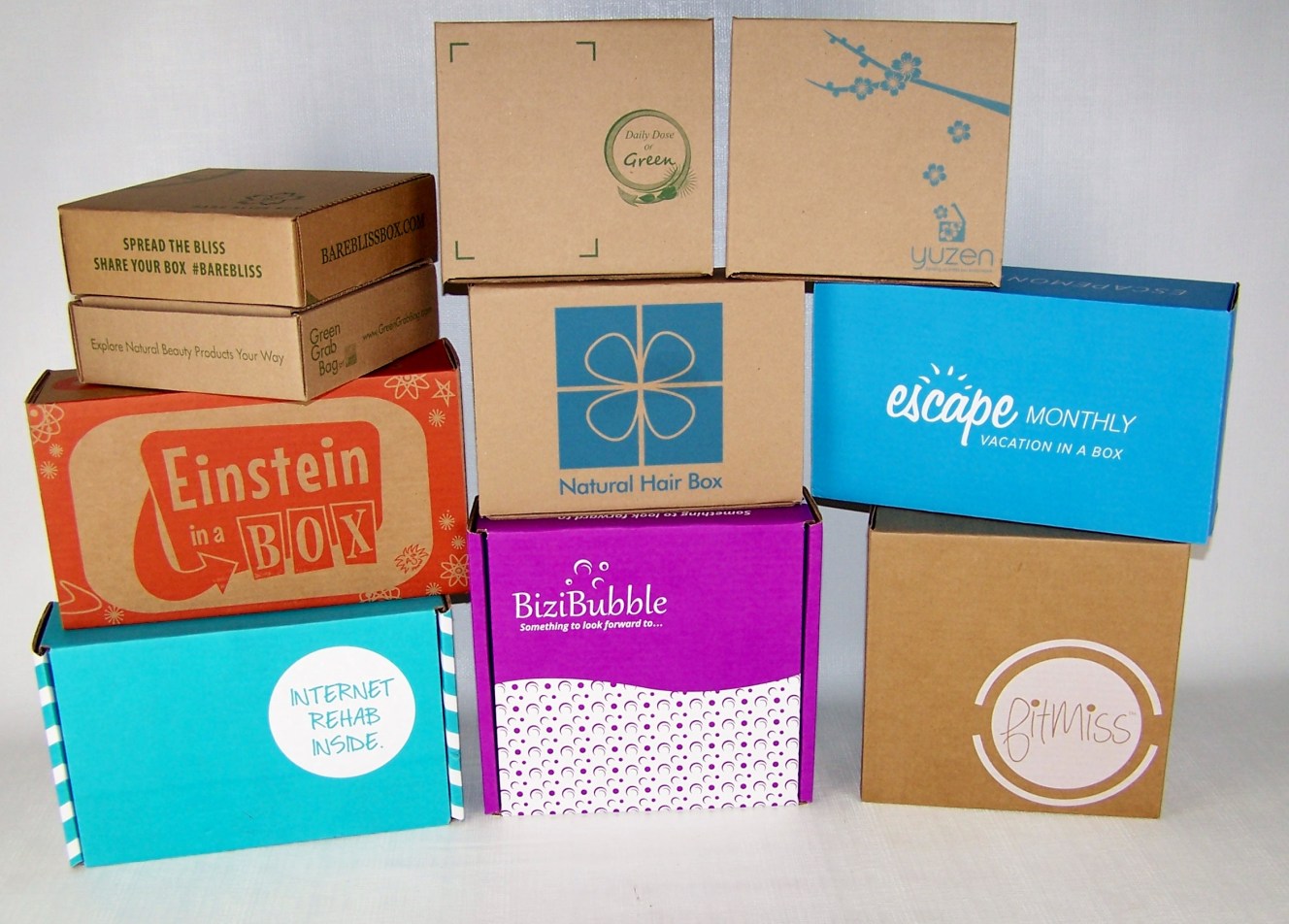
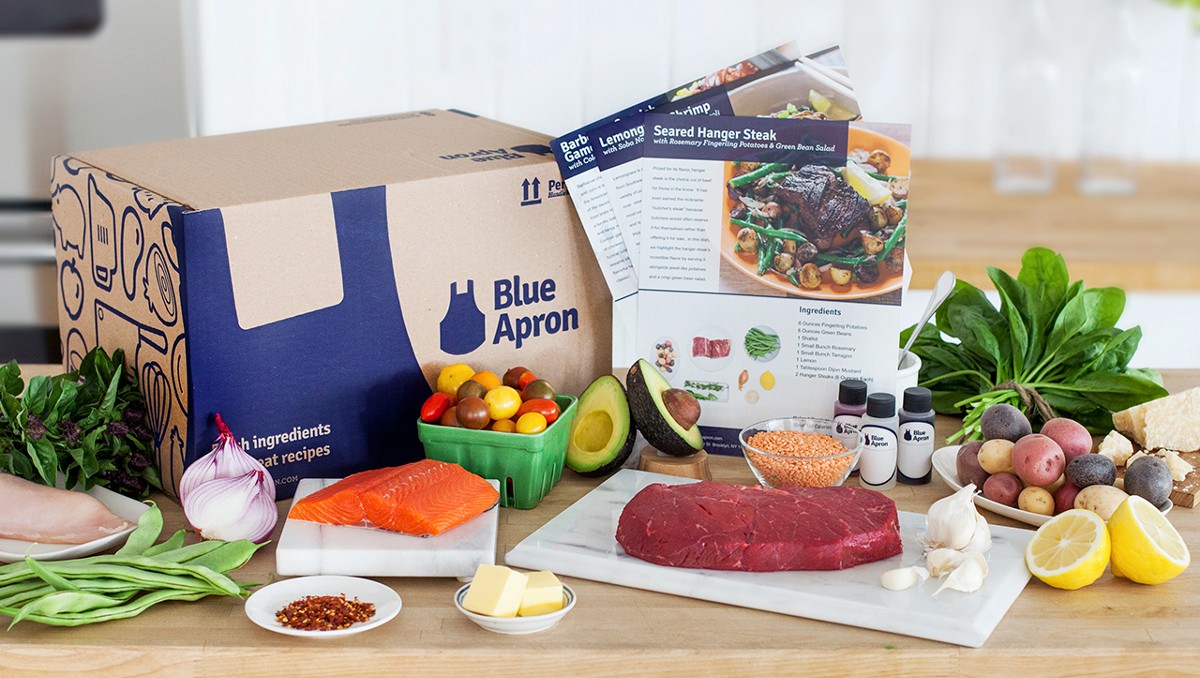

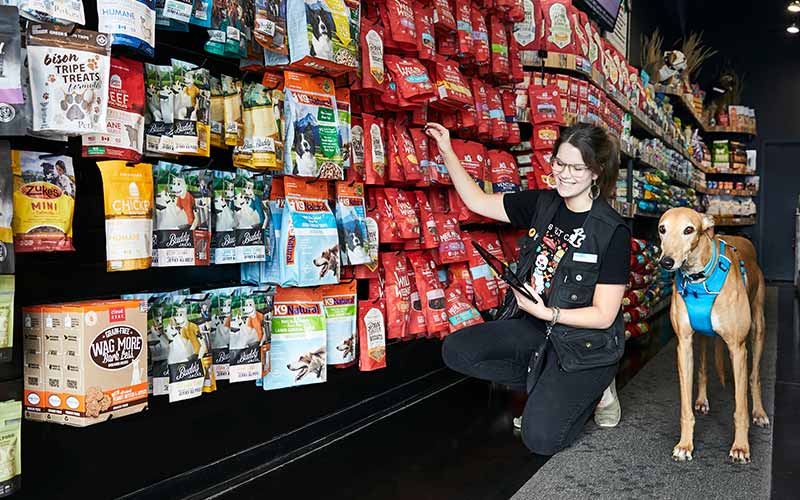

.jpg)


